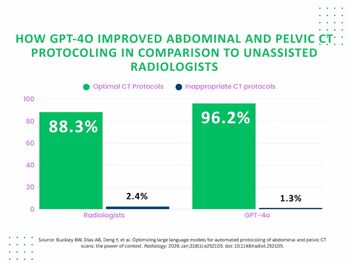
CR, MR, digital mammography contribute to storage crunch
A 10-year study of imaging volume demands on a PACS at the Medical University of South Carolina shows how significant a factor multislice CT has become in image data storage.
A 10-year study of imaging volume demands on a PACS at the Medical University of South Carolina shows how significant a factor multislice CT has become in image data storage.
At the beginning of the study, CR was the major source of demand for the archive. With the advent of MSCT in the late 90s, and especially the more recent introduction of 64-slice and dual-source CT, overall imaging volumes have begun to soar. CT has become responsible for about half of the data volume, according to Eugene Mah, a researcher at MUSC.
Today, the facility routinely sees CT exams that generate nearly 10,000 slices of data, Mah said at the 2007 Society for Imaging Informatics in Medicine meeting.
The study traced archive utilization by month and modality back to the introduction of the university's PACS in 1996. During that time, the amount of data produced each month went from 48 GB to almost 1.2 TB, increasing by a factor of 25.
For most of the period examined, computed radiography made up the bulk of the storage requirement. But beginning in 1999, CR's percentage began to decline and the role of CT began to increase. Today, CT storage accounts for 47.3%, or 557 GB/month. Next is CR at 18.4%, followed by MR and digital mammography, at 16.7% each.
Among the facility's CT scanners are two single-source 64-slice units and one dual-source unit. The dual-source scanner generates even more data than the conventional 64-slice units, Mah said.
Although the growth in CT data has been exponential, Mah expects it to level off as throughput capacity is reached and protocols normalized. In the meantime, administrators who want to project archival needs can do so with some accuracy, he said.
They should:
- get monthly data on storage history for the past year;
- estimate total storage per month based on image file sizes; and
- apply a realistic model (linear, polynomial, power, exponential) to forecast future growth.
CR, CT, MR, and digital mammography are the four modalities that will raise the greatest concern, Mah said.
Newsletter
Stay at the forefront of radiology with the Diagnostic Imaging newsletter, delivering the latest news, clinical insights, and imaging advancements for today’s radiologists.




























